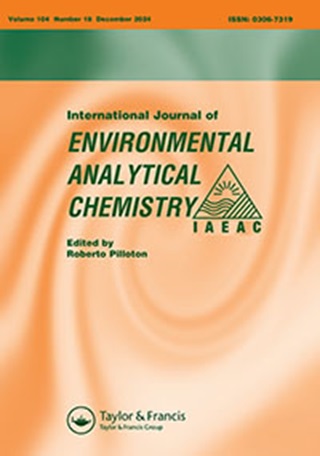电分析的量子飞跃:石墨烯点将电化学传感提升到一个新的水平
IF 2.5
4区 化学
Q3 CHEMISTRY, ANALYTICAL
International Journal of Environmental Analytical Chemistry
Pub Date : 2023-11-05
DOI:10.1080/03067319.2023.2278752
引用次数: 0
摘要
摘要石墨烯量子点(GQDs)由于其独特的光学、电子和催化性能而成为电化学传感领域的重要材料。GQDs可以使用自上而下和自下而上的方法合成,绿色合成越来越受欢迎。GQDs的尺寸、表面化学性质和掺杂程度影响其在传感应用中的电化学性能。GQDs增强了电子转移,并为电化学传感器中的信号放大提供了催化位点,用于各种分析物,包括神经递质、生物标志物、金属离子和污染物。然而,在提高GQD合成收率、性能控制、传感器稳定性和选择性方面仍存在挑战。本文综述了GQD合成方法、性质调制策略及其在生物医学、环境和食品分析电化学传感器中的应用的最新进展。讨论了GQDs的独特性质,提高了传感器的灵敏度和选择性。未来的研究方向,以解决当前的挑战和实现下一代传感器技术的GQDs的全部潜力。关键词:石墨烯量子点电化学传感特性应用传感器生物传感器披露声明作者未报告潜在利益冲突。本文章由计算机程序翻译,如有差异,请以英文原文为准。
Quantum leap for electroanalysis: graphene dots take electrochemical sensing to the next level
ABSTRACTGraphene quantum dots (GQDs) have emerged as promising nanomaterials for electrochemical sensing due to their unique optical, electronic and catalytic properties. GQDs can be synthesised using top-down and bottom-up approaches, with green synthesis gaining popularity. The size, surface chemistry and doping of GQDs affect their electrochemical performance for sensing applications. GQDs enhance electron transfer and provide catalytic sites for signal amplification in electrochemical sensors for diverse analytes including neurotransmitters, biomarkers, metal ions and pollutants. However, challenges remain in improving GQD synthesis yield, property control, sensor stability and selectivity. This review summarises recent advances in GQD synthesis methods, strategies for property modulation, and applications in electrochemical sensors for biomedical, environmental and food analysis. The unique properties of GQDs that enable enhanced sensitivity and selectivity of sensors are discussed. Future research directions to address current challenges and realise the full potential of GQDs for next-generation sensor technology are also presented.KEYWORDS: Graphene quantum dotselectrochemical sensingpropertiesapplicationssensorsbiosensors Disclosure statementNo potential conflict of interest was reported by the author(s).
求助全文
通过发布文献求助,成功后即可免费获取论文全文。
去求助
来源期刊
CiteScore
5.90
自引率
7.70%
发文量
373
审稿时长
4.4 months
期刊介绍:
International Journal of Environmental Analytical Chemistry comprises original research on all aspects of analytical work related to environmental problems. This includes analysis of organic, inorganic and radioactive pollutants in air, water, sediments and biota; and determination of harmful substances, including analytical methods for the investigation of chemical or metabolic breakdown patterns in the environment and in biological samples.
The journal also covers the development of new analytical methods or improvement of existing ones useful for the control and investigation of pollutants or trace amounts of naturally occurring active chemicals in all environmental compartments. Development, modification and automation of instruments and techniques with potential in environment sciences are also part of the journal.
Case studies are also considered, particularly for areas where information is scarce or lacking, providing that reported data is significant and representative, either spatially or temporally, and quality assured. Owing to the interdisciplinary nature of this journal, it will also include topics of interest to researchers in the fields of medical science (health sciences), toxicology, forensic sciences, oceanography, food sciences, biological sciences and other fields that, in one way or another, contribute to the knowledge of our environment and have to make use of analytical chemistry for this purpose.

 求助内容:
求助内容: 应助结果提醒方式:
应助结果提醒方式:


